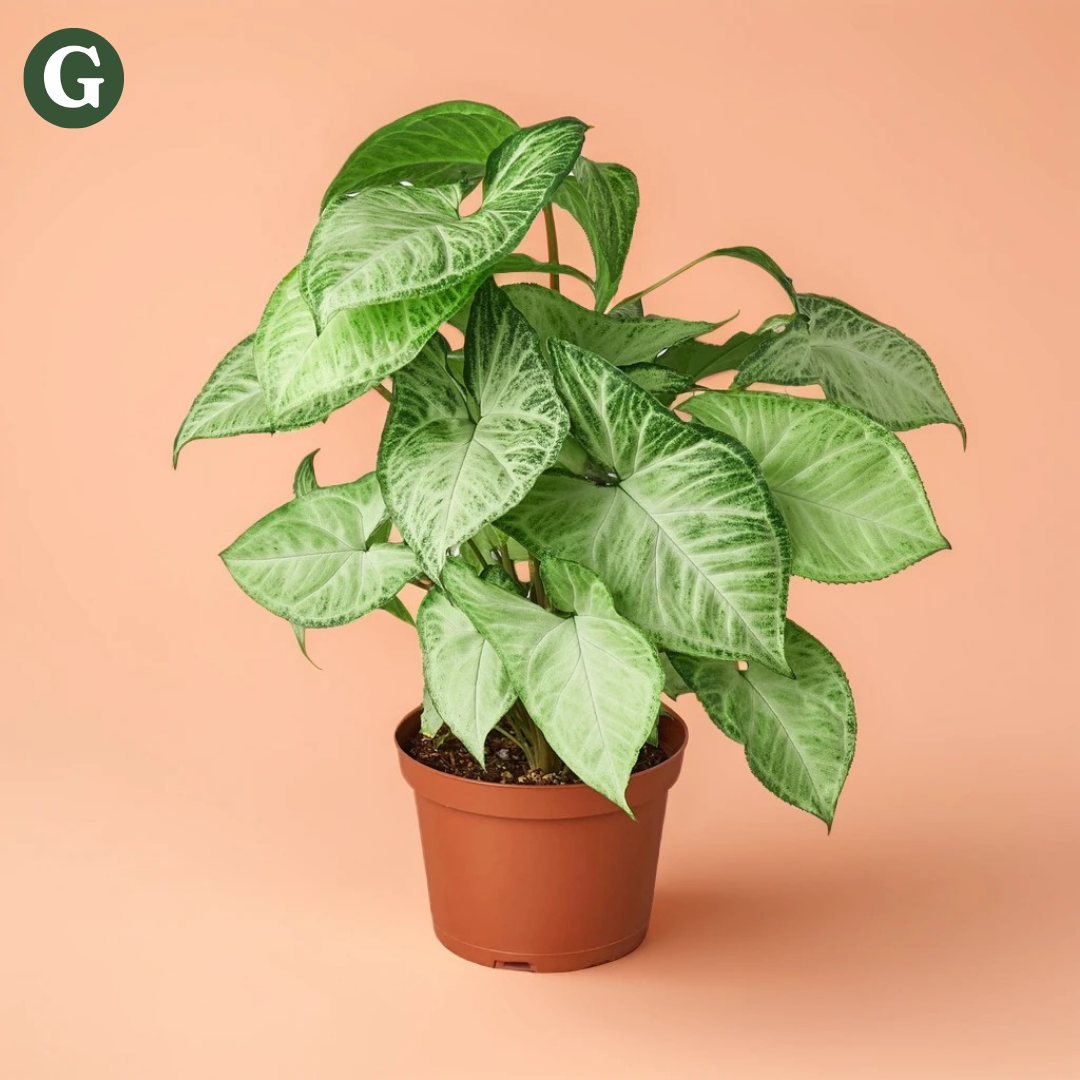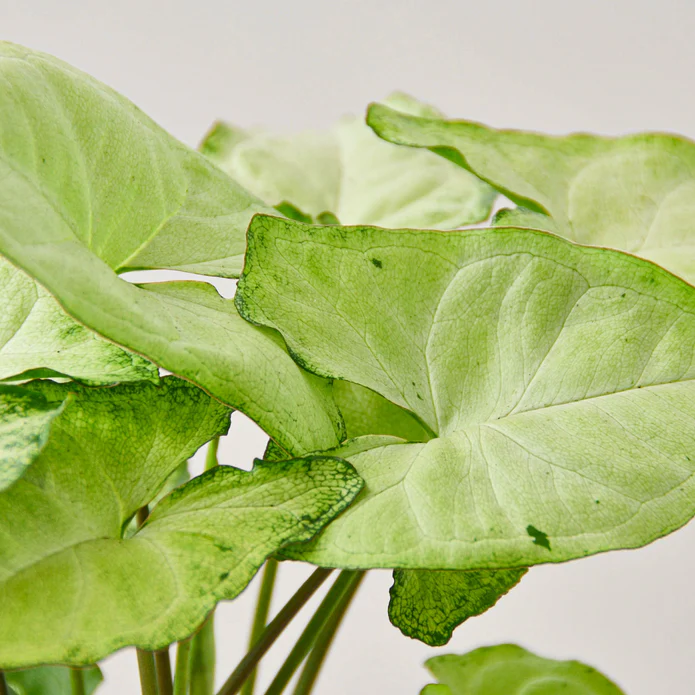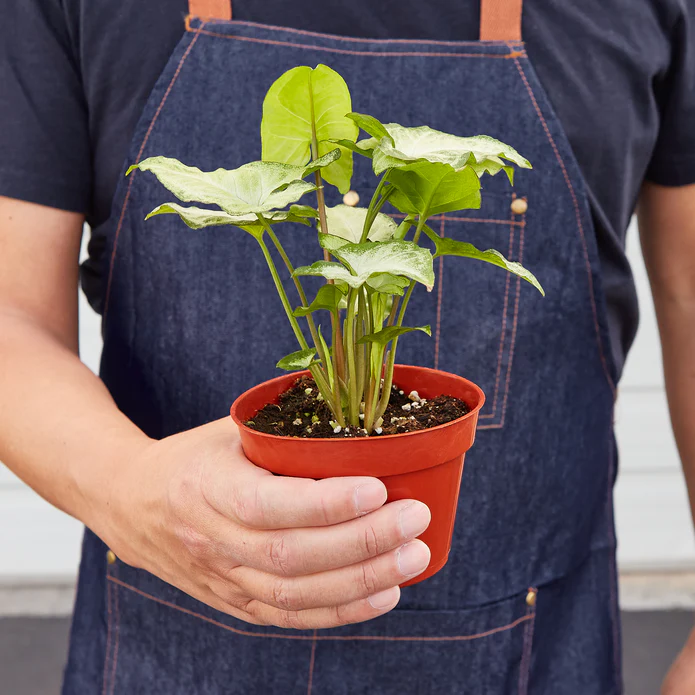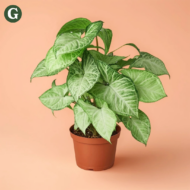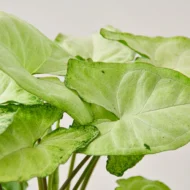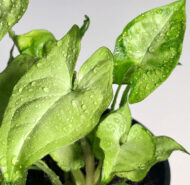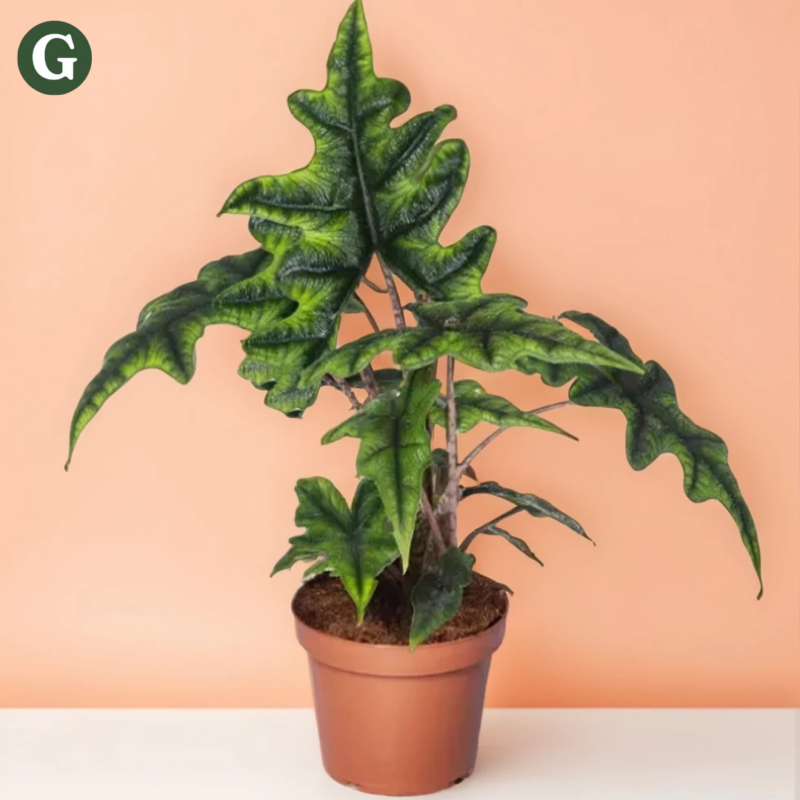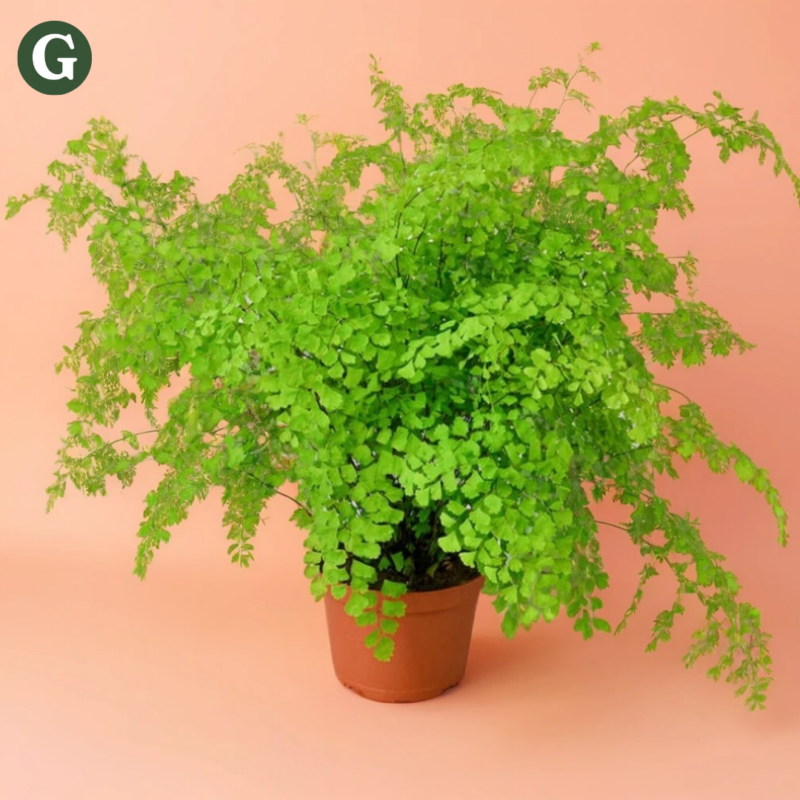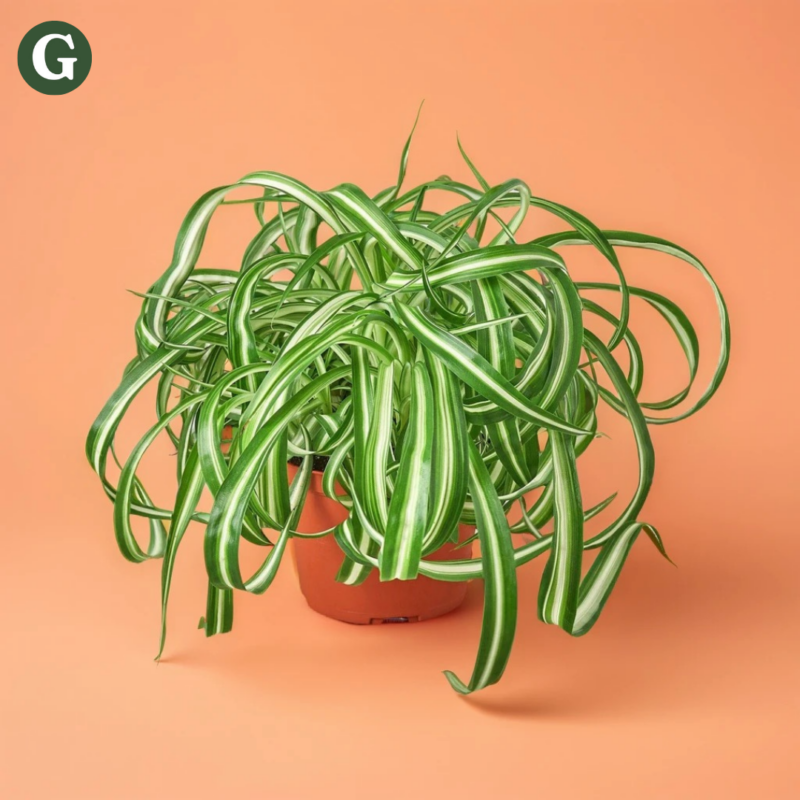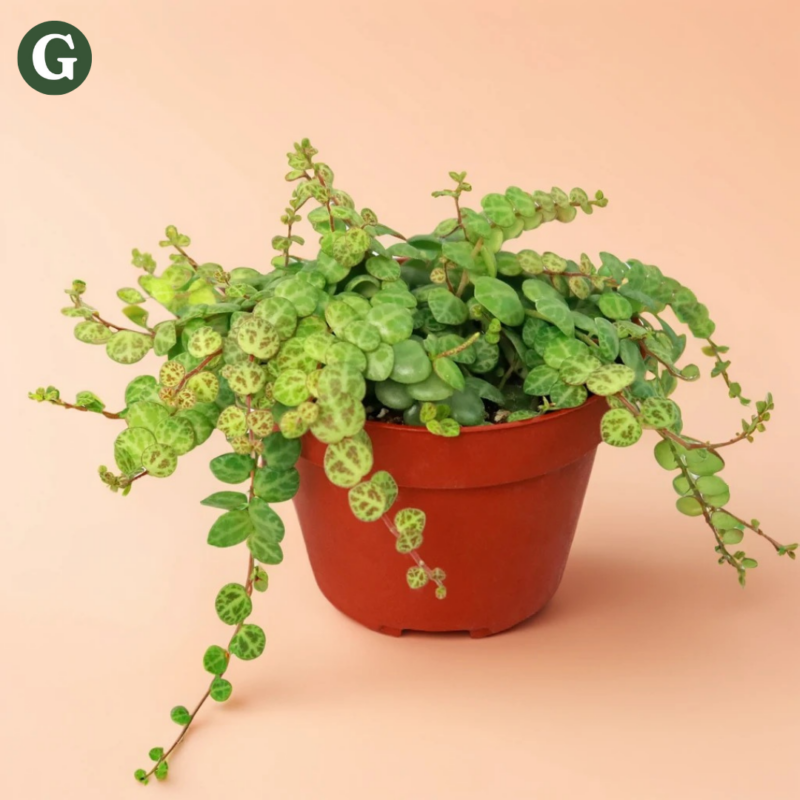Syngonium White Butterfly
Botanical Name: Syngonium podophyllum 'White Butterfly'
Common Name(s): White Butterfly Syngonium
The Syngonium White Butterfly is a striking cultivar of the popular Syngonium podophyllum, known for its beautiful variegated leaves. The leaves of this plant start with a mix of white, cream, and green tones, and as the plant matures, the white areas may take on more of a pale green hue. The arrowhead-shaped foliage creates a lush, elegant appearance, making this plant an eye-catching addition to any indoor space. The graceful, trailing vines of the White Butterfly Syngonium also make it a perfect plant for hanging baskets or cascading from shelves.
This variety thrives in bright, indirect light to preserve its stunning variegation, but it can adapt to lower light conditions as well, though the colors may not be as vibrant. It prefers well-draining soil and should be watered regularly, allowing the top inch of soil to dry out between waterings. White Butterfly Syngonium is adaptable to average room temperatures and humidity levels but will appreciate a more humid environment, such as a kitchen or bathroom, to thrive.
Air Purifying Qualities:
- Toxin Removal: The Syngonium White Butterfly is effective at removing harmful indoor pollutants, such as formaldehyde, xylene, and benzene, contributing to cleaner, healthier air in your home or office.
- Oxygen Production: Like many houseplants, it absorbs carbon dioxide and releases oxygen, improving the overall air quality in your living space.
- Humidity Regulation: This plant helps to slightly raise humidity through transpiration, which can benefit environments with dry indoor air.
Note: The Syngonium White Butterfly is toxic to pets (cats and dogs). Please prevent pets from chewing on the leaves to avoid any digestive upset, vomiting and difficulty swallowing.
Care Insights & Expert Tips
- Fertilize regularly: Feed your Syngonium with a balanced liquid fertilizer diluted to half strength every 2-4 weeks during the growing season.
- Monitor for pests: Keep an eye out for common houseplant pests like mealybugs and spider mites. Treat infestations promptly with insecticidal soap or neem oil.
- Pruning: Prune your Syngonium regularly to encourage healthy growth.
- Propagation: Syngoniums can be easily propagated through stem cuttings.
- Unique leaf shape: Syngoniums are known for their distinctive, arrowhead-shaped leaves, which can vary in color and shape depending on the variety.
- Climbing or trailing: Syngoniums can be trained to climb a moss pole or allowed to trail.

Visit our plant care library
Find essential tips to keep your plants thriving, vibrant, and healthy.
